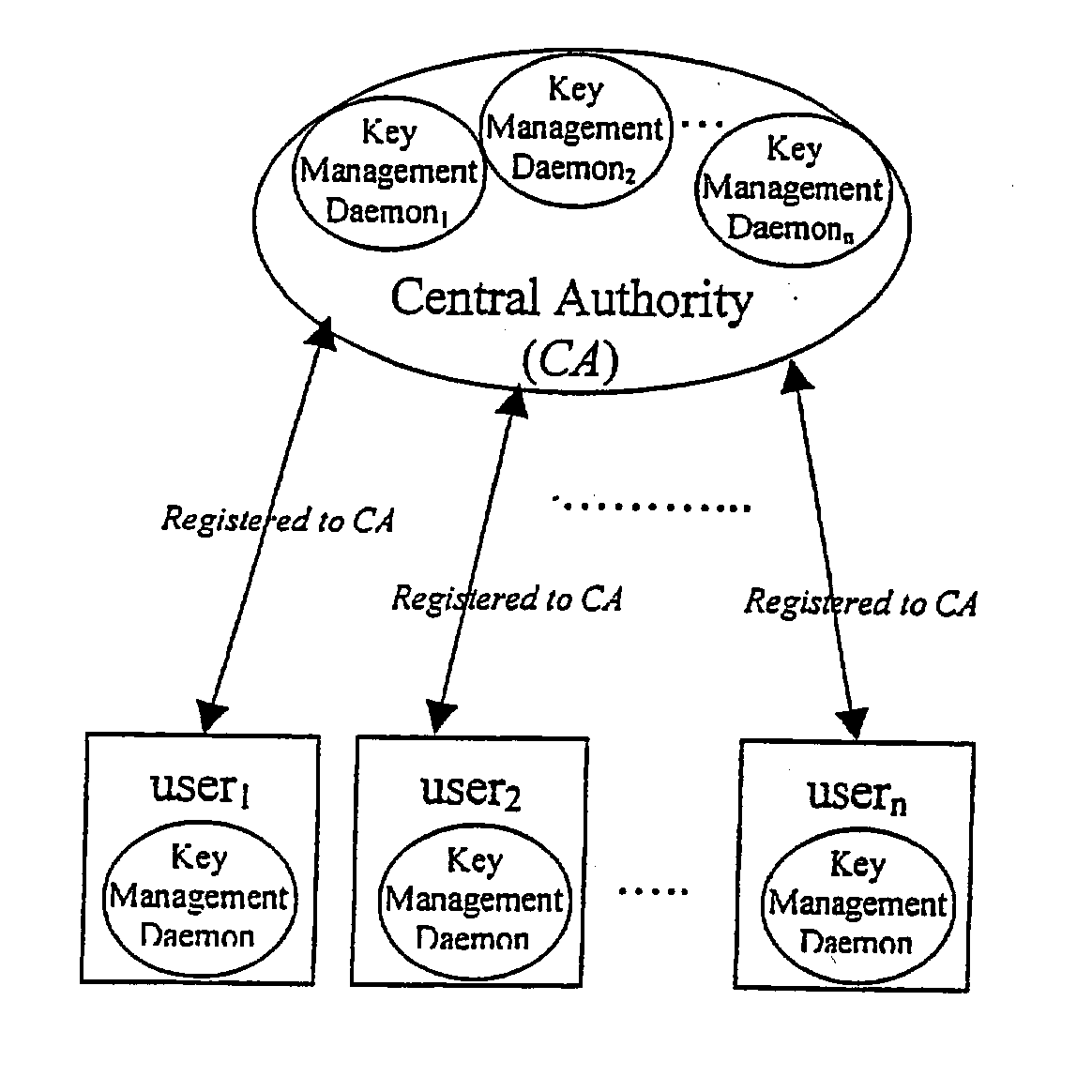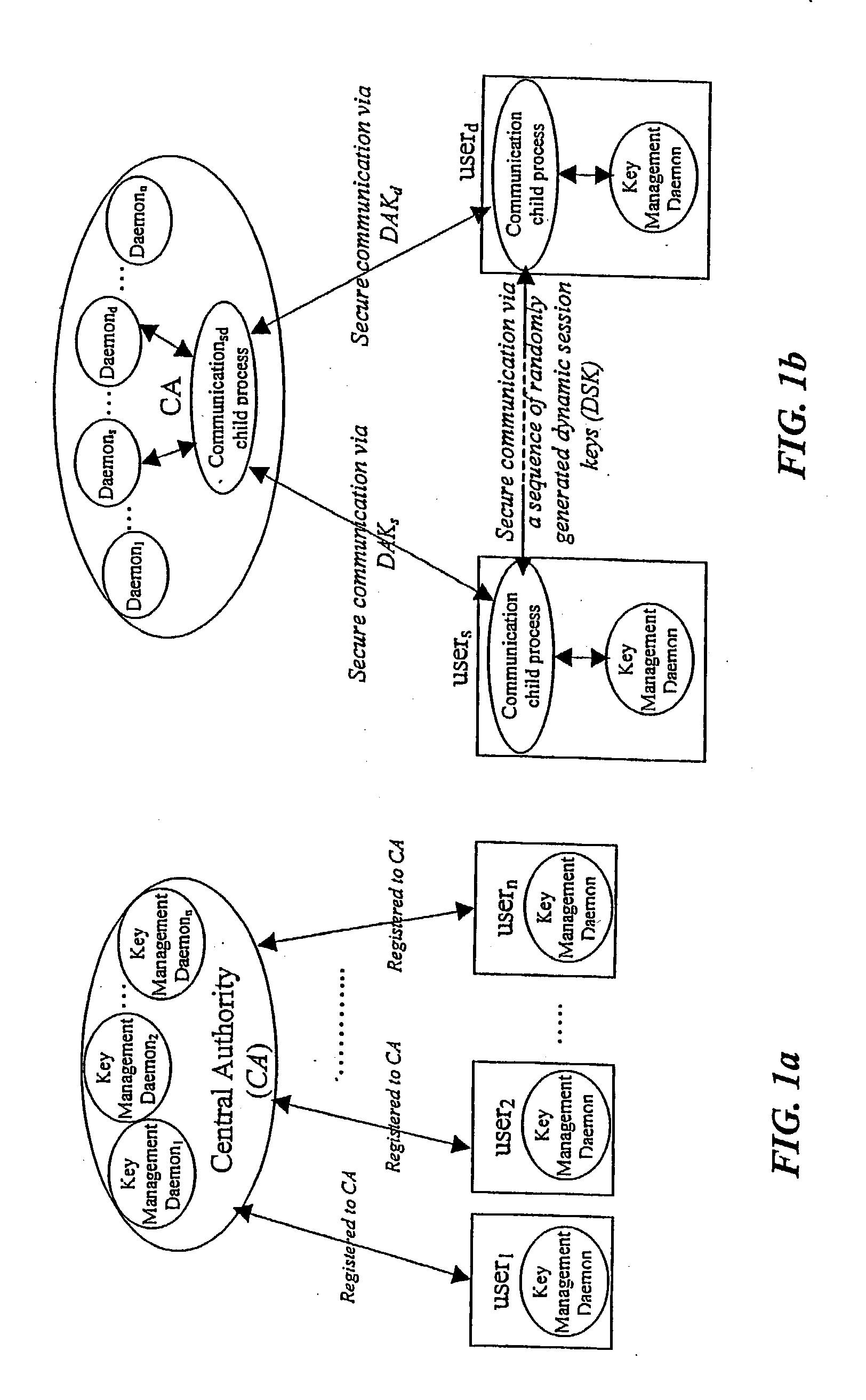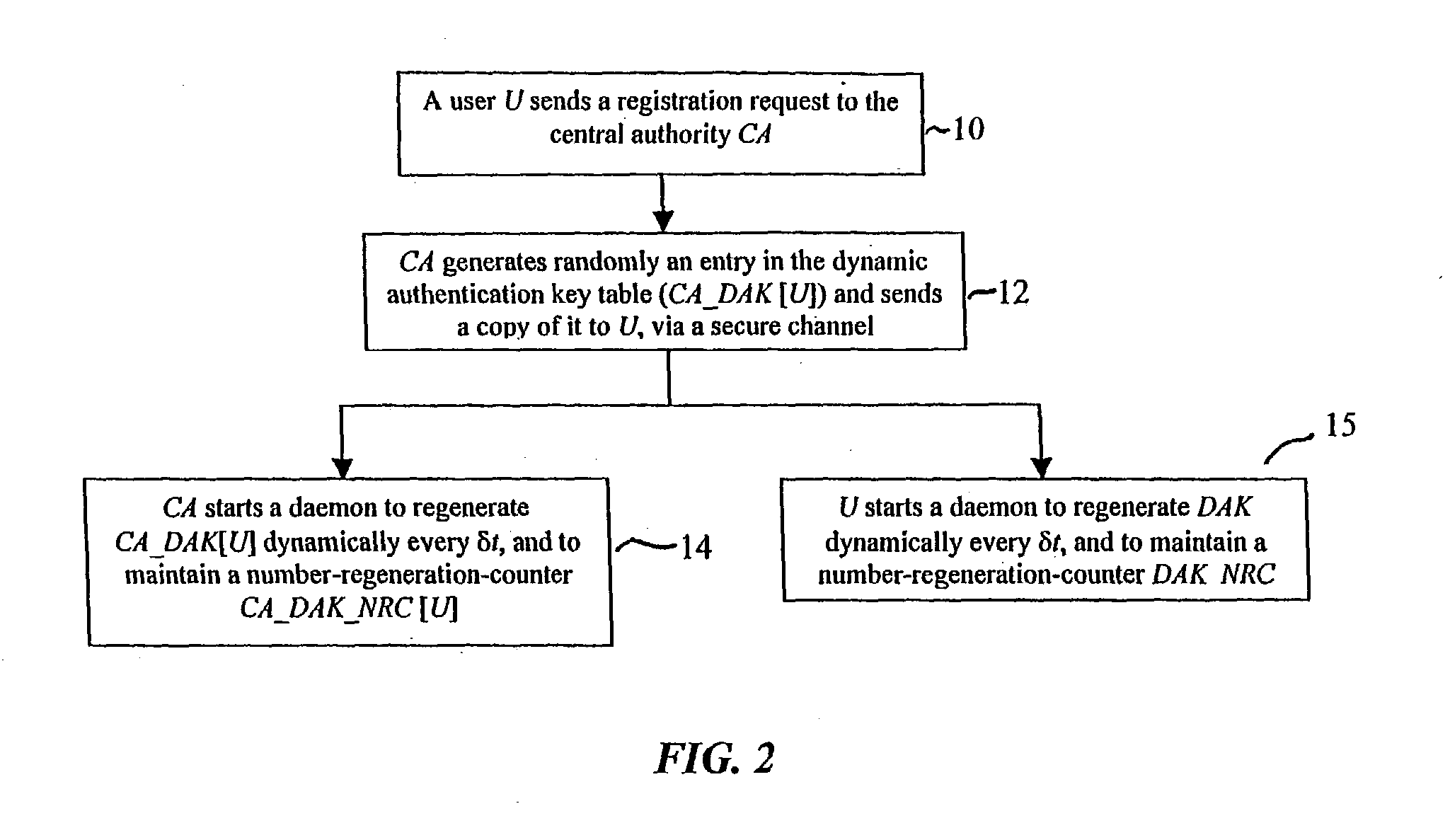Dynamic security authentication for wireless communication networks
a wireless communication network and dynamic security technology, applied in the field of wireless communication network security, can solve the problems of reducing the security of wireless communication networks, requiring new keys, and compromising the encryption mechanism, so as to reduce the waste of bandwidth in wireless communication networks, minimize the exchange of keys, and minimize the effect of wasted bandwidth
- Summary
- Abstract
- Description
- Claims
- Application Information
AI Technical Summary
Benefits of technology
Problems solved by technology
Method used
Image
Examples
first embodiment
[0070] In a first embodiment, the present invention is a dynamic symmetric key encryption method and system for network security. The invention is implemented between end-users (U) and central authentication authorities (CAs) for user authentication purposes, and between end-users for secure exchange of digital data. The users and CA reside at their respective nodes, or programmable apparatuses, such as at one or more computers, and are in electrical communication, such as via a computer network. Communicated data flows over a data stream between the user and CA programmable apparatuses. Computer-readable memory provides storage for the data, dynamically changing keys, and other variables, as needed to allow for the regeneration of subsequent dynamic keys, and to carry out other necessary processes within the computer. Means are provided on the programmable apparatuses for performing all of the various methods involved in the dynamic encryption method. Such means include primarily c...
second embodiment
[0127] As used with reference to the invention, the term "node" refers to a communications terminal, such as an authentication server, supplicant, or access point. The term "authentication server" (AS) refers to a central communication node residing at a programmable apparatus such as a computer or network server that is in communication with supplicants via access points. Computer-readable memory in communication with the AS programmable apparatus provides storage for data, dynamically changing keys, and other variables as needed to allow for the regeneration of subsequent dynamic keys, and to carry out other necessary processes within the computer. Suitable means are provided on the AS programmable apparatus for performing all of the various methods involved in the dynamic authentication method. Such means include primarily computer-readable means, such as software, and the necessary related hardware.
[0128] As used herein, the term "supplicant" refers to a mobile communication dev...
PUM
 Login to View More
Login to View More Abstract
Description
Claims
Application Information
 Login to View More
Login to View More - R&D
- Intellectual Property
- Life Sciences
- Materials
- Tech Scout
- Unparalleled Data Quality
- Higher Quality Content
- 60% Fewer Hallucinations
Browse by: Latest US Patents, China's latest patents, Technical Efficacy Thesaurus, Application Domain, Technology Topic, Popular Technical Reports.
© 2025 PatSnap. All rights reserved.Legal|Privacy policy|Modern Slavery Act Transparency Statement|Sitemap|About US| Contact US: help@patsnap.com



